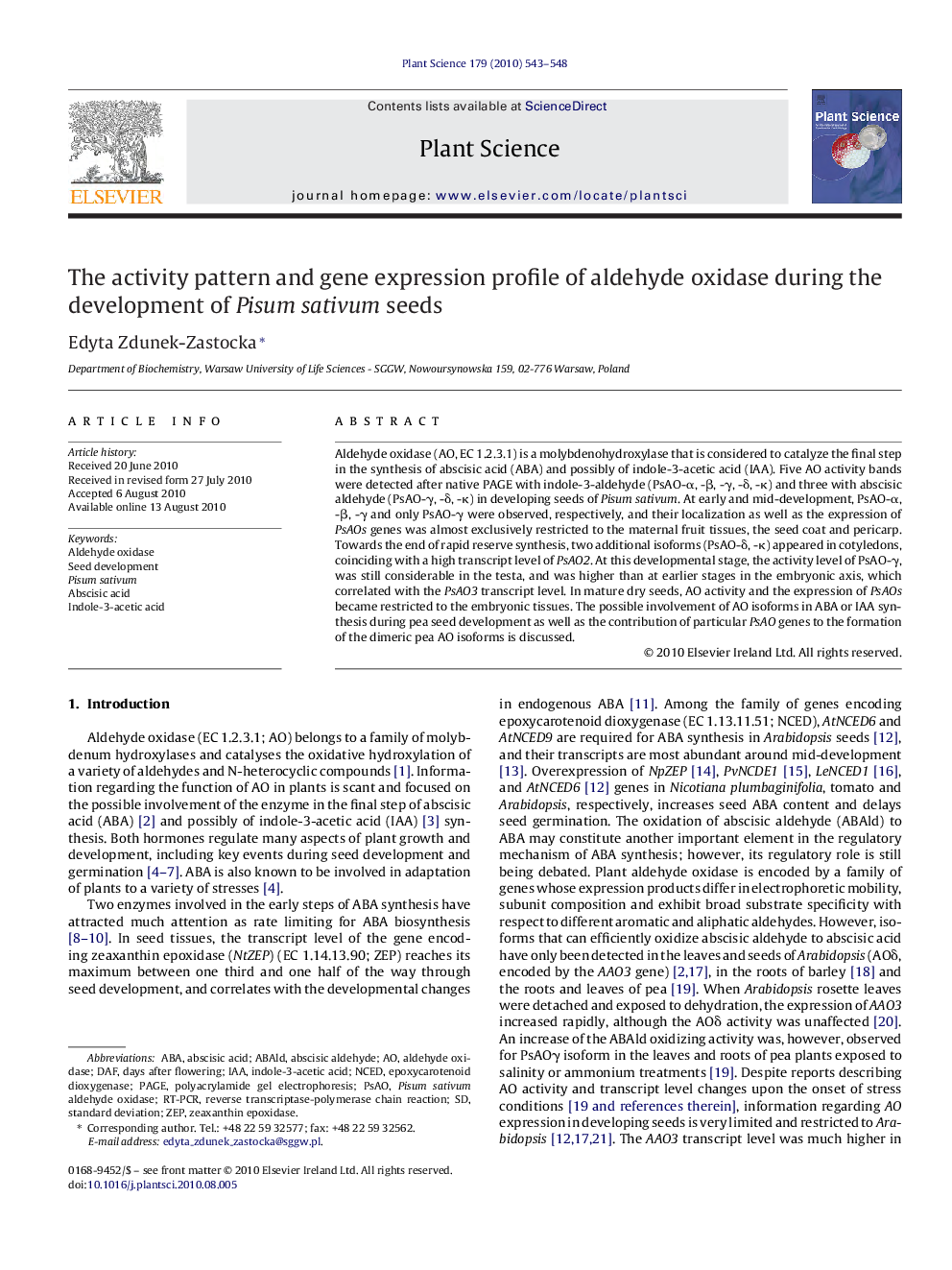| Article ID | Journal | Published Year | Pages | File Type |
|---|---|---|---|---|
| 2017612 | Plant Science | 2010 | 6 Pages |
Aldehyde oxidase (AO, EC 1.2.3.1) is a molybdenohydroxylase that is considered to catalyze the final step in the synthesis of abscisic acid (ABA) and possibly of indole-3-acetic acid (IAA). Five AO activity bands were detected after native PAGE with indole-3-aldehyde (PsAO-α, -β, -γ, -δ, -κ) and three with abscisic aldehyde (PsAO-γ, -δ, -κ) in developing seeds of Pisum sativum. At early and mid-development, PsAO-α, -β, -γ and only PsAO-γ were observed, respectively, and their localization as well as the expression of PsAOs genes was almost exclusively restricted to the maternal fruit tissues, the seed coat and pericarp. Towards the end of rapid reserve synthesis, two additional isoforms (PsAO-δ, -κ) appeared in cotyledons, coinciding with a high transcript level of PsAO2. At this developmental stage, the activity level of PsAO-γ, was still considerable in the testa, and was higher than at earlier stages in the embryonic axis, which correlated with the PsAO3 transcript level. In mature dry seeds, AO activity and the expression of PsAOs became restricted to the embryonic tissues. The possible involvement of AO isoforms in ABA or IAA synthesis during pea seed development as well as the contribution of particular PsAO genes to the formation of the dimeric pea AO isoforms is discussed.
Research highlights▶ Localization of ABAld oxidizing activities within seeds differ depends on developmental stage. ▶ At early and mid-development, activities and expression of PsAOs are restricted to maternal fruit tissues. ▶ At late-development, activities and expression of PsAOs are detected in maternal and zygotic fruit tissues.
